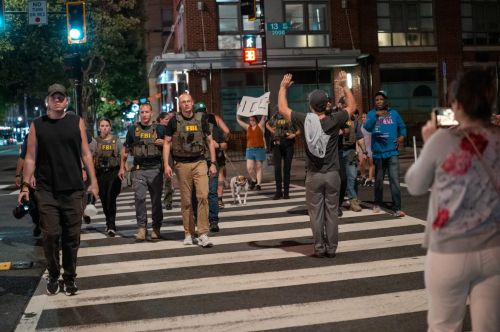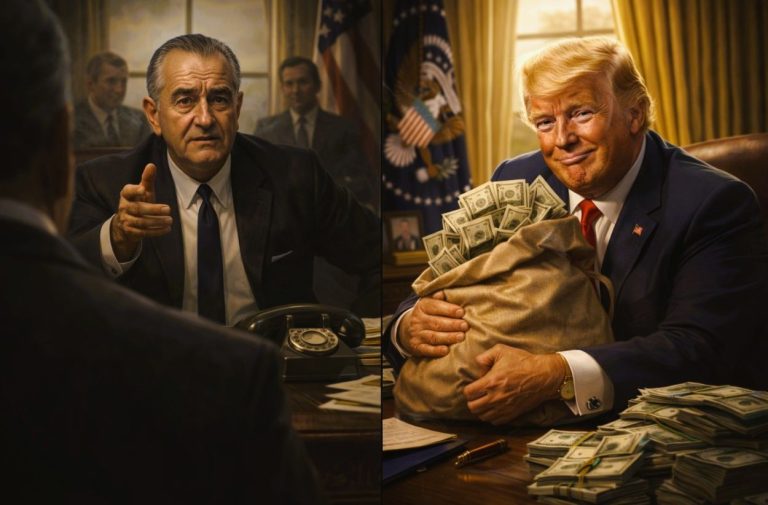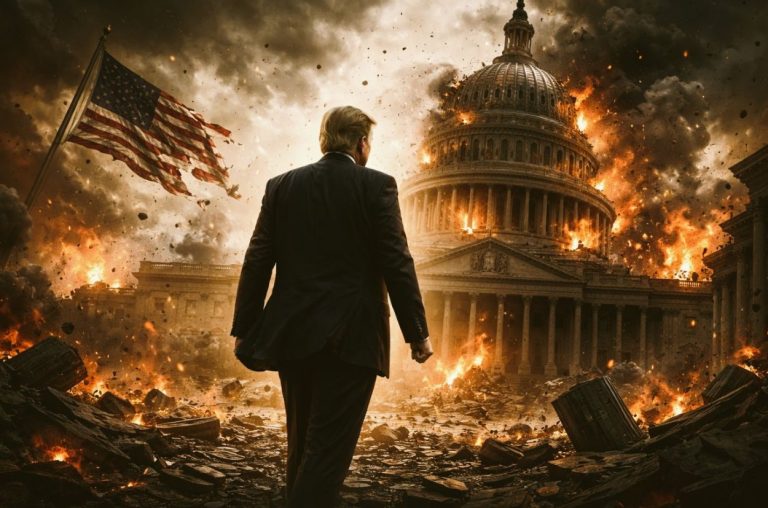

The action shows that the question is not only what the law permits, but how far those in power are willing to stretch it.

By Matthew A. McIntosh
Public Historian
Brewminate
Washington as a Test Case
When President Donald Trump ordered the National Guard into Washington D.C. and federalized local law enforcement, the city’s residents witnessed an unsettling concentration of executive power. In a place without statehood, where the president holds unique authority over policing, the decision carried both immediate and symbolic weight. It turned the capital into a laboratory for federal intervention in urban governance, one with potential implications far beyond the Potomac.
D.C.’s unusual legal status made the move possible with minimal procedural resistance. Unlike states, the District does not control its National Guard in the same way, and its police force operates under a local-federal hybrid framework that gives the president final say in emergencies. This combination has long been criticized as leaving the city politically vulnerable. In this case, it allowed Trump to sidestep the kind of negotiations or legal challenges that might have slowed similar actions in state jurisdictions.
The Legal Authority in D.C.
The president’s authority over the District rests on provisions of the D.C. Home Rule Act and the federal government’s constitutional power to govern the capital. That power includes the ability to deploy the D.C. National Guard without a governor’s consent and to assume direct control of local policing during what the executive deems a crisis.
Historically, this authority has been used sparingly. Federal control was asserted during moments such as the 1968 riots following Martin Luther King Jr.’s assassination and in the aftermath of the September 11 attacks. In both cases, the action was framed as a response to extraordinary events rather than as a tool for shaping political dynamics. Trump’s use of the power sits in a different register, with critics noting that the triggering circumstances appear less about neutral crisis management and more about exerting political will over dissent.
The Threat to Extend Beyond the Capital
The more provocative element of Trump’s move lies in his public threat to replicate it in other cities. Here the legal terrain changes significantly. In states, the president cannot simply federalize law enforcement at will. While the National Guard can be activated under federal command through statutes like the Insurrection Act, doing so without the cooperation of state leadership is rare and politically explosive.
The Insurrection Act permits federal troops, including federalized Guard units, to enforce laws in a state when there is an insurrection, obstruction of justice, or widespread violation of federal rights that state authorities cannot or will not address. Invocations of the Act are historically limited, for instance, during the desegregation of Little Rock schools in 1957 or the 1992 Los Angeles riots. In each case, the context was framed as a breakdown of local order. Using it preemptively, or in response to protests that local authorities believe they can manage, would invite fierce legal challenges and likely lead to clashes between state and federal law enforcement.
Federalizing Police: Law vs. Practice
In practice, the president has few avenues to directly control municipal police departments in states. Federal agencies such as the FBI or Department of Homeland Security can operate in coordination with local forces, but they cannot simply take command of them without state acquiescence or statutory justification. This makes the D.C. situation a poor analog for other cities, though the optics of the capital’s federalization may still exert political pressure.
What Trump can do, however, is deploy federal officers from agencies like the U.S. Marshals Service, Border Patrol, or Federal Protective Service into a city. Such deployments, as seen in Portland in 2020, do not federalize local police but can functionally create a parallel enforcement presence. These operations are legally distinct from National Guard mobilizations but can still escalate tensions and raise questions about accountability.
The Political and Cultural Stakes
The political stakes in using military or quasi-military force in American cities are considerable. While the law provides a narrow pathway for such actions, the cultural memory of federal troops in domestic streets is often bound up with images of unrest, authoritarian overreach, or moments of profound societal rupture.
Trump’s language about extending the D.C. model to other urban centers taps into a deep national unease about the boundaries between federal power and local autonomy. For supporters, the prospect is framed as restoring order in cities they view as mismanaged or unsafe. For opponents, it represents a dangerous centralization of force that erodes the federalist structure and risks turning political disagreement into grounds for military intervention.
A Moment of Precedent-Setting
Whether the threats materialize or remain rhetorical, the episode in Washington will be studied as a precedent. It illustrates how the president’s control over the capital can be leveraged not only for immediate tactical aims but also as a political message to other jurisdictions.
If future administrations see the D.C. deployment as a viable political tool, the nation could face a recalibration of the norms that have kept domestic military presence rare and exceptional. For now, the legal lines remain more restrictive in the states than in the capital, but the willingness to test those lines may be the real story. In this sense, what happened in Washington is both a local incident and a national warning. It shows that the question is not only what the law permits, but how far those in power are willing to stretch it, and how prepared the rest of the system is to push back.
Originally published by Brewminate, 08.18.2025, under the terms of a Creative Commons Attribution-NonCommercial-NoDerivatives 4.0 International license.


